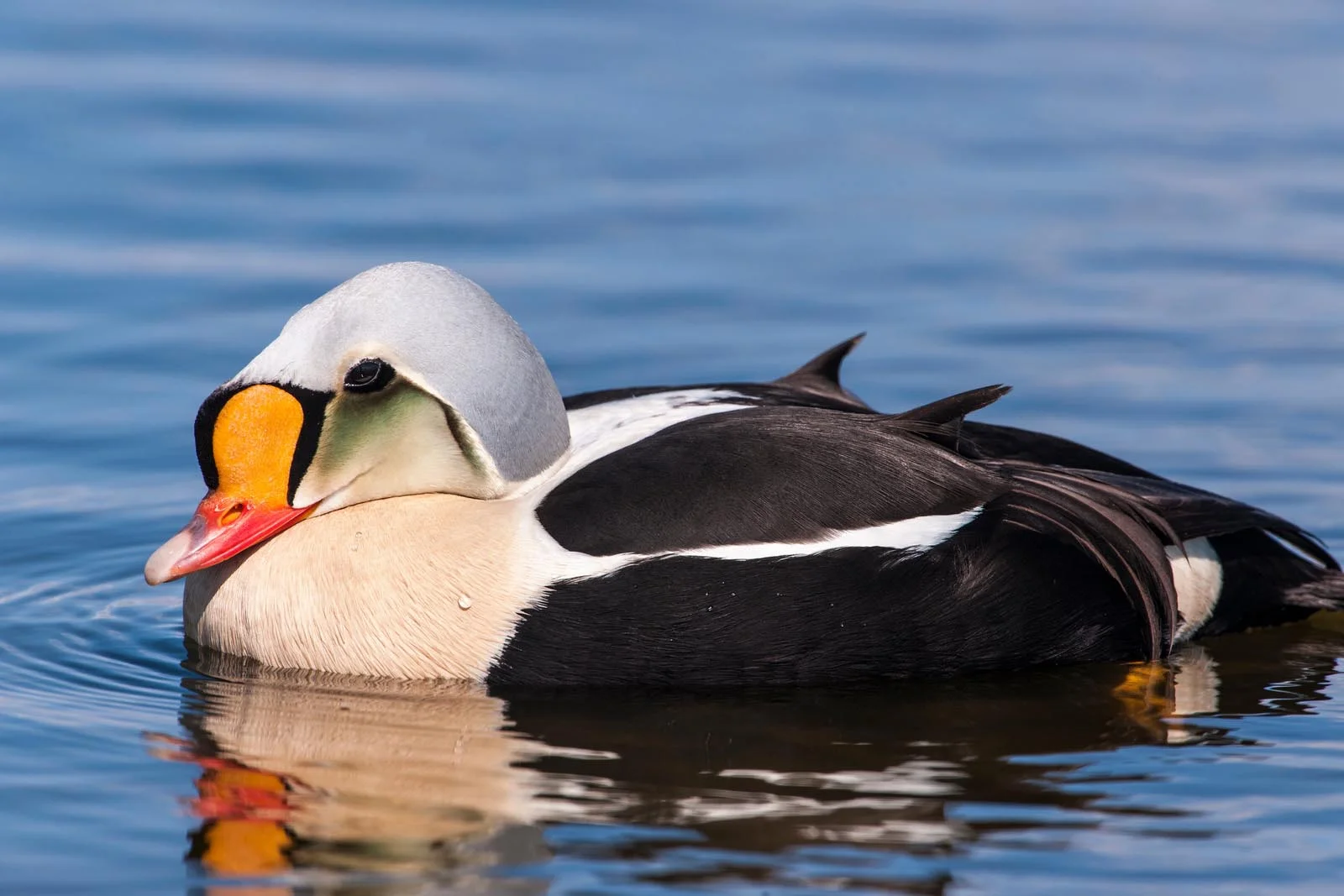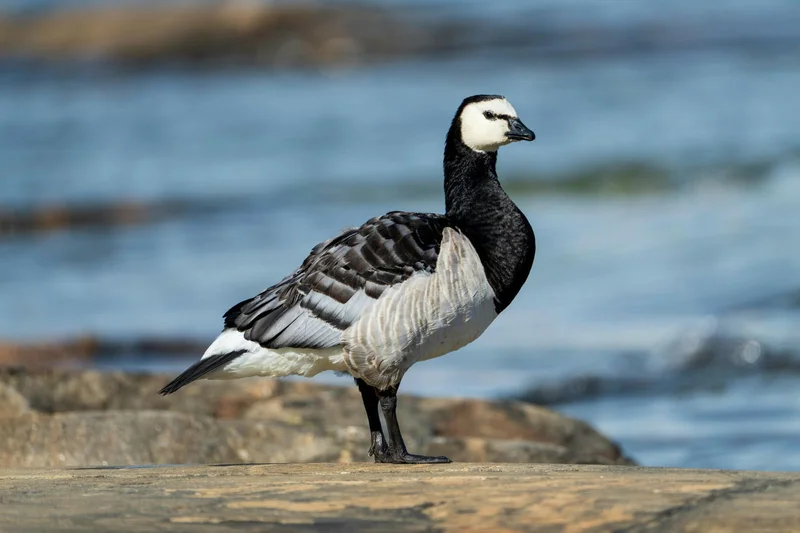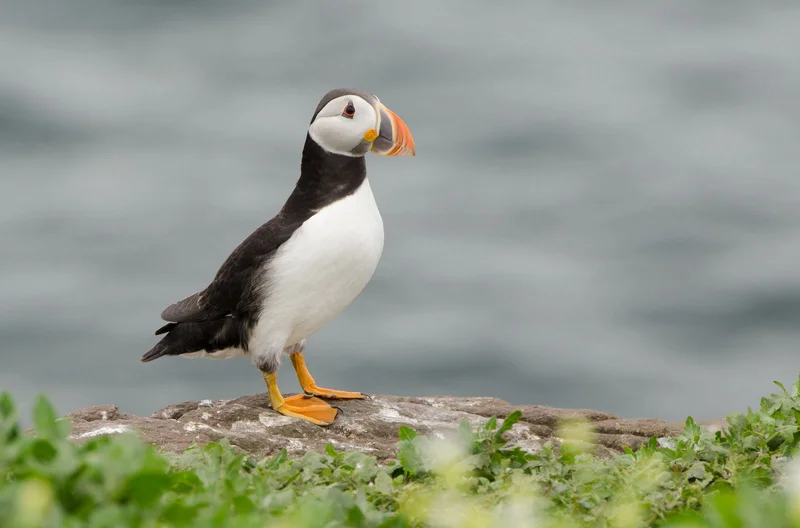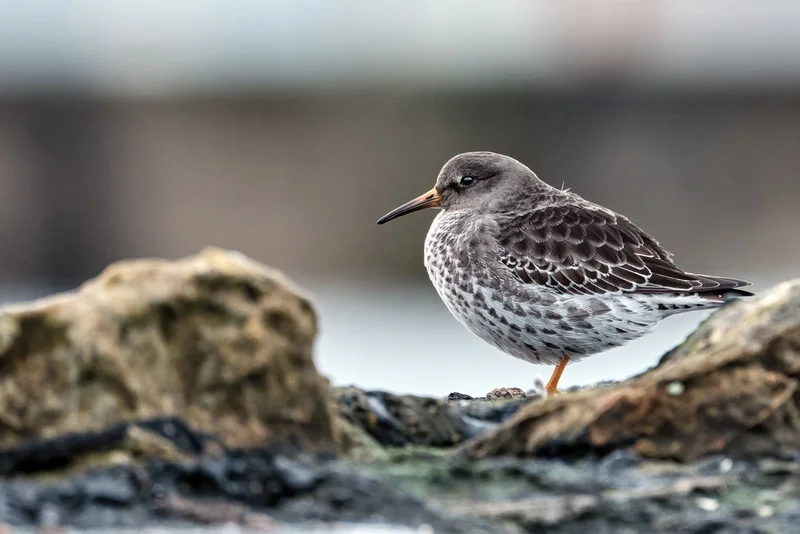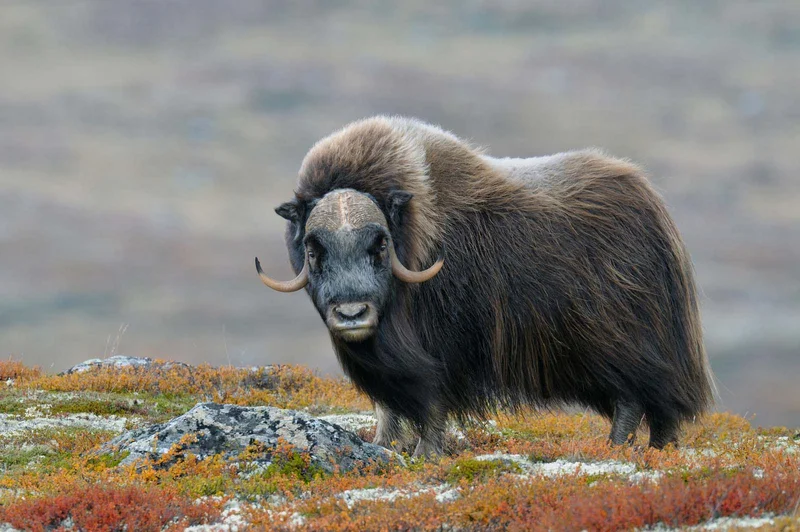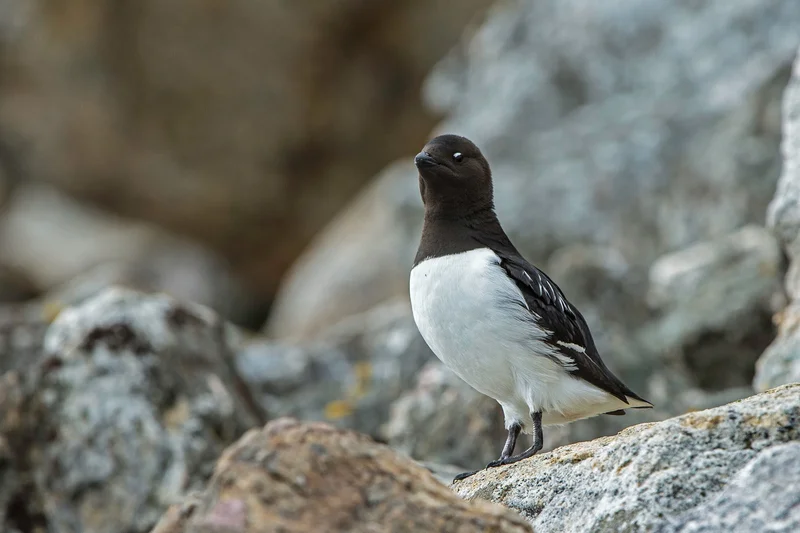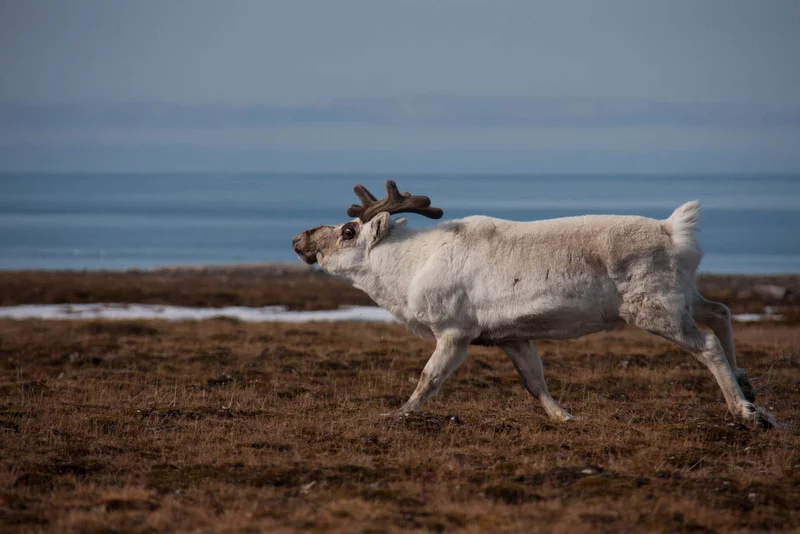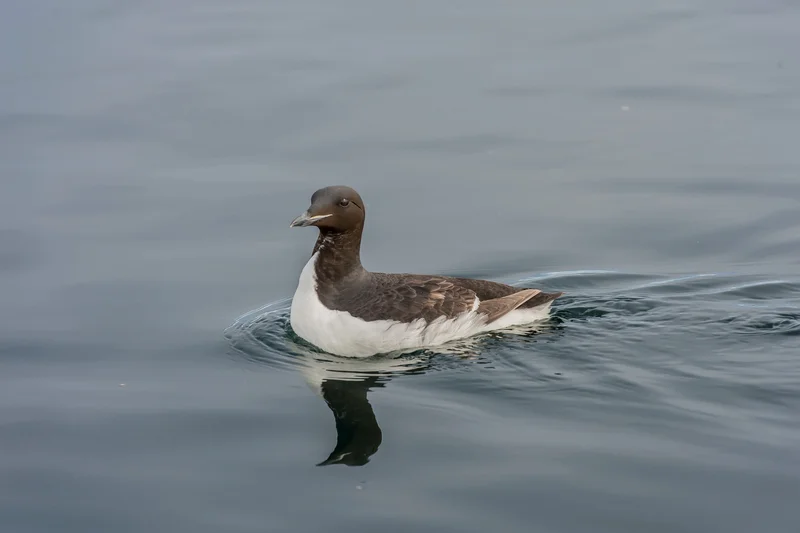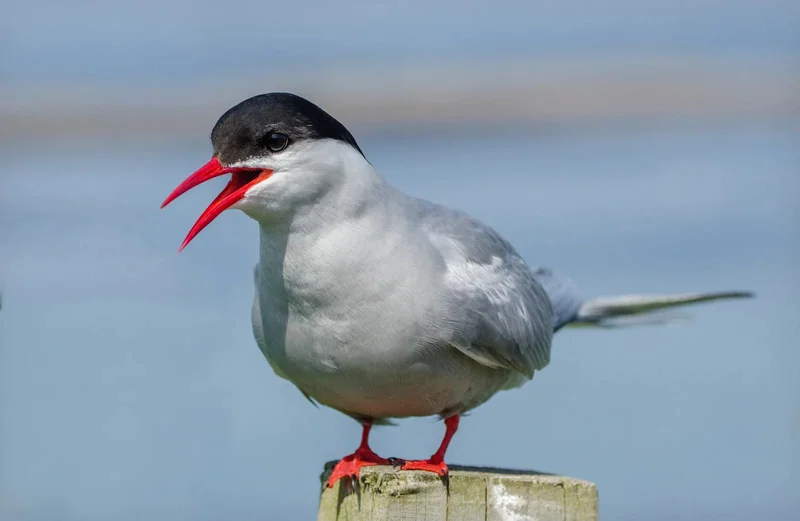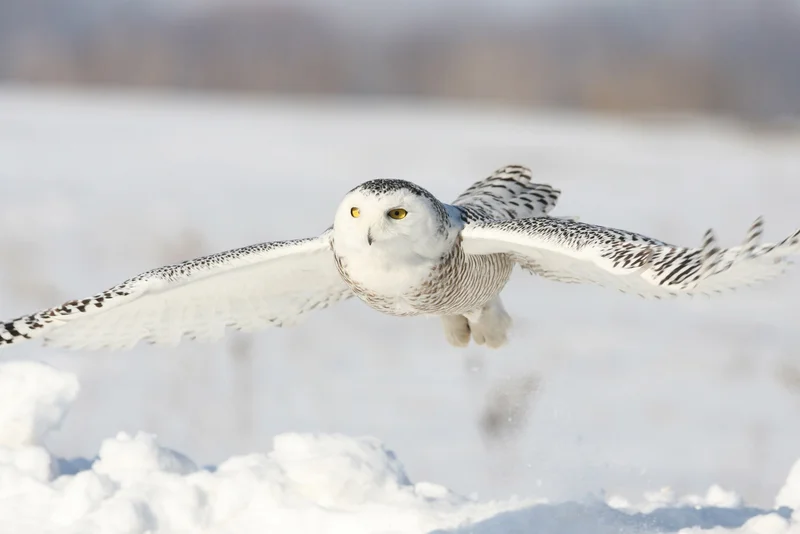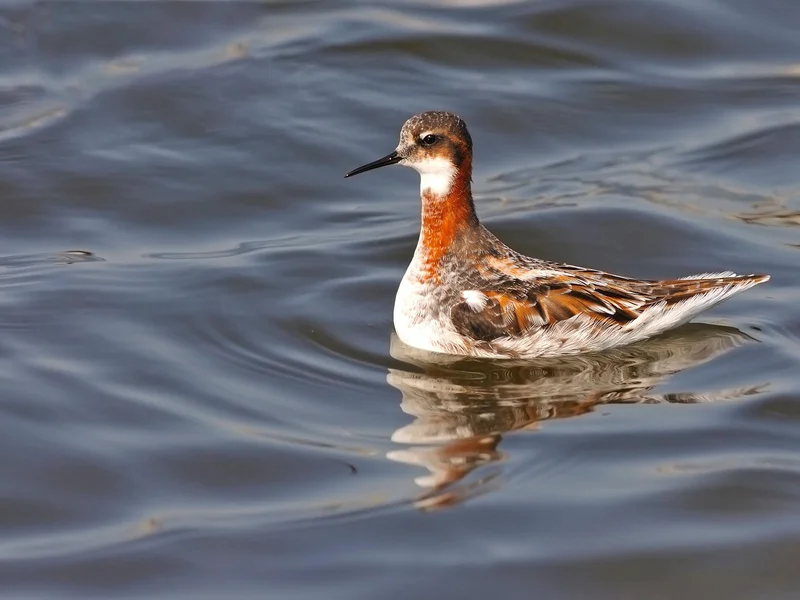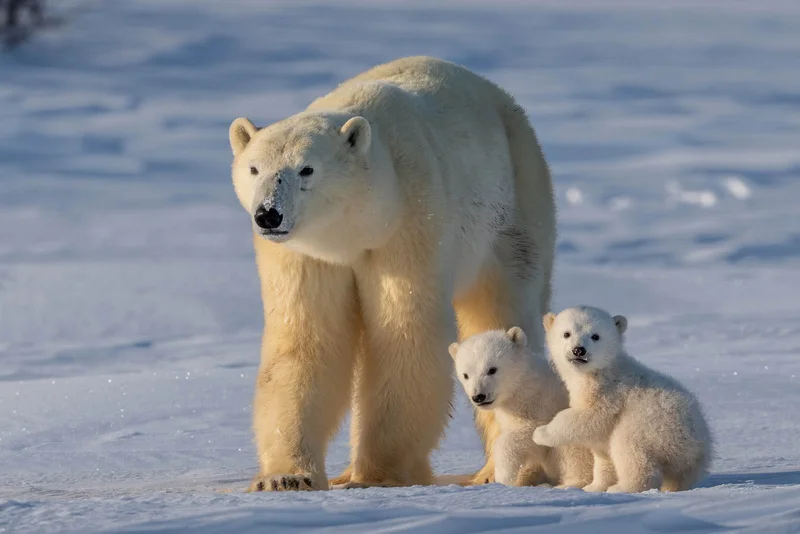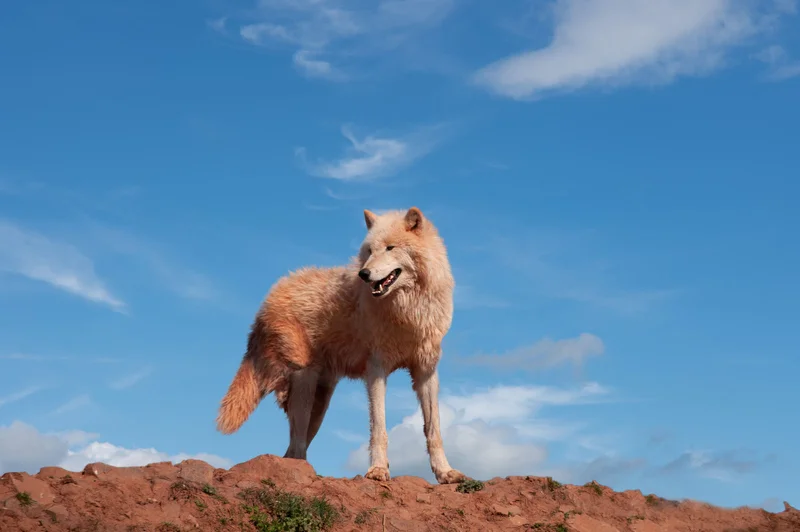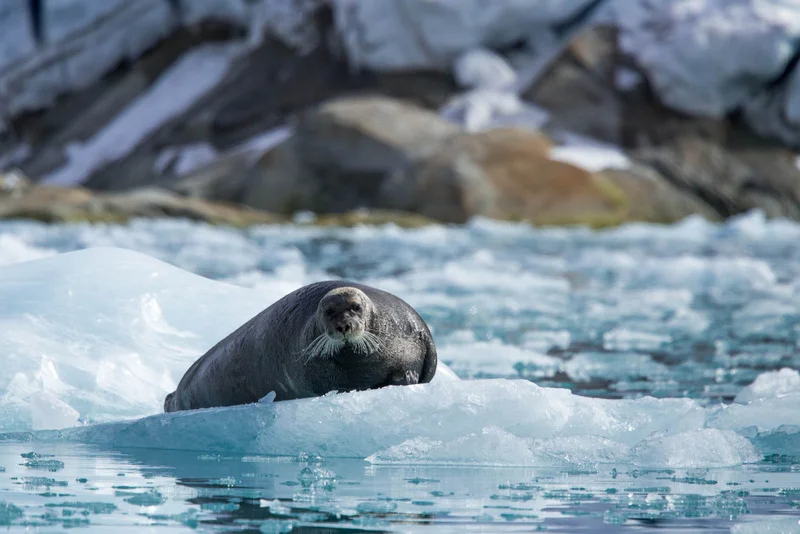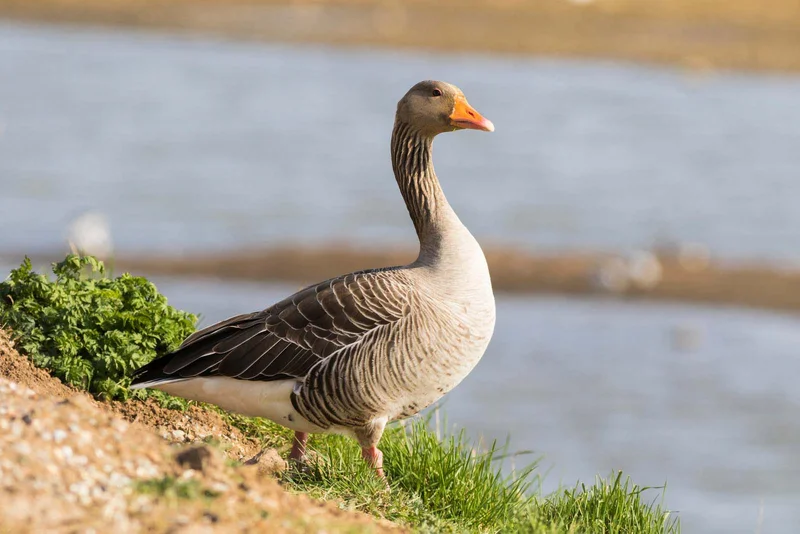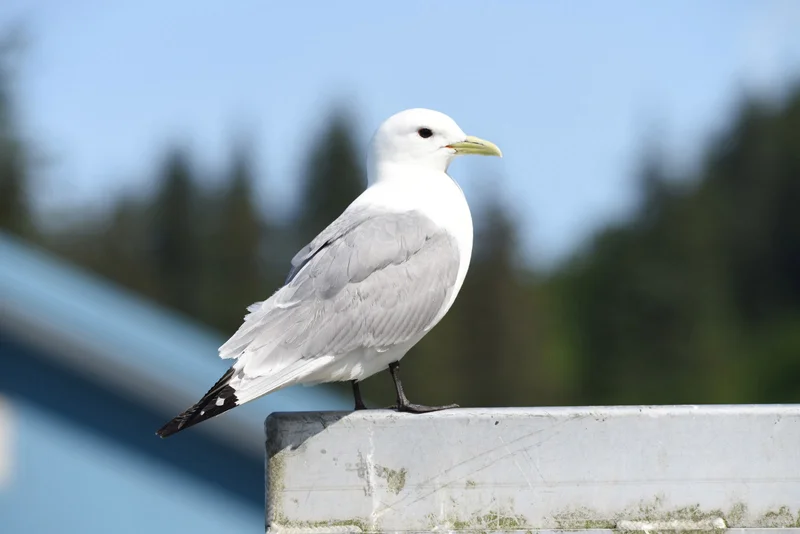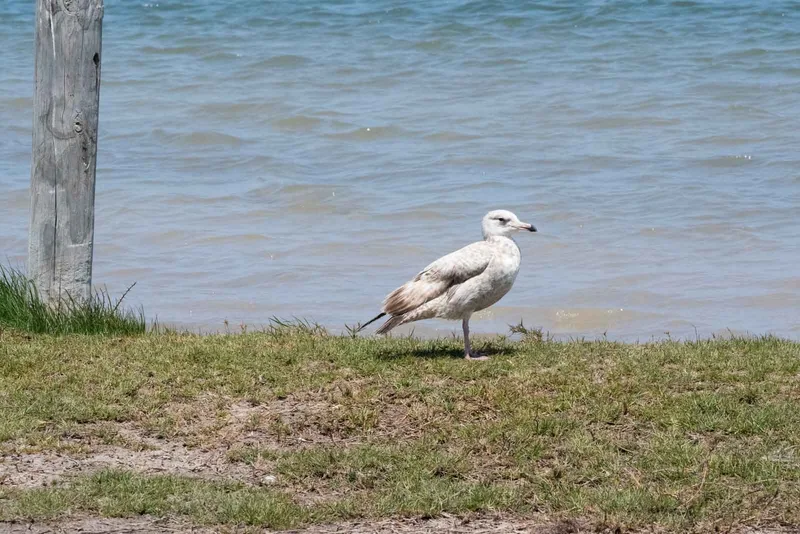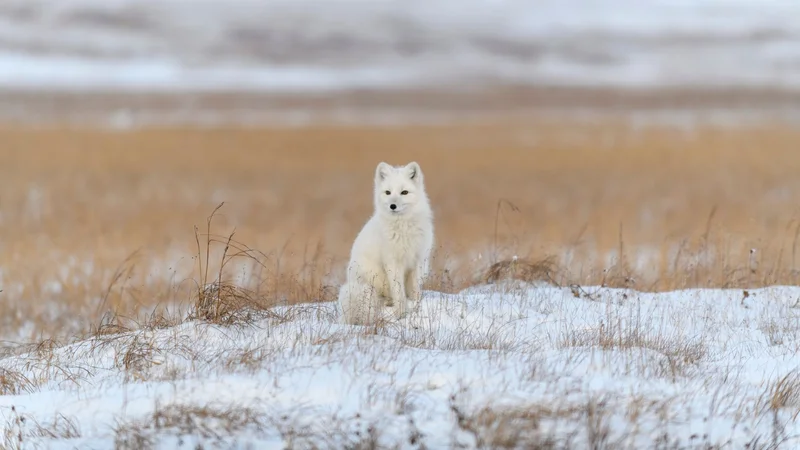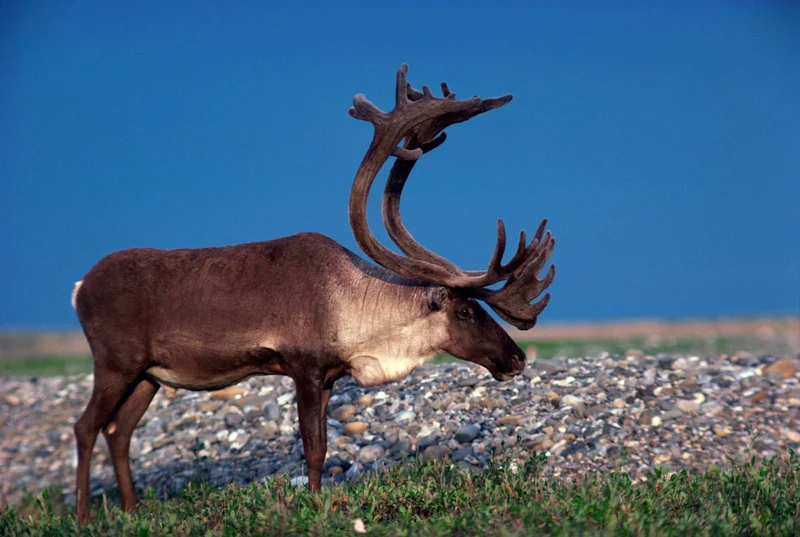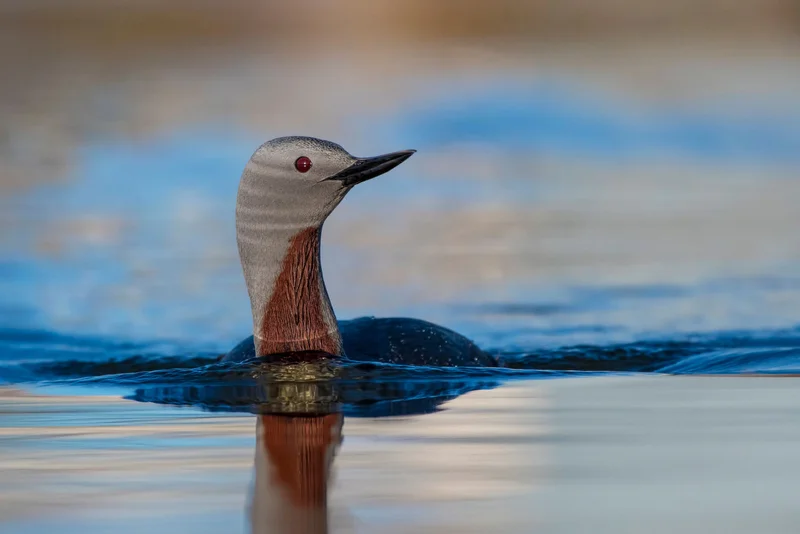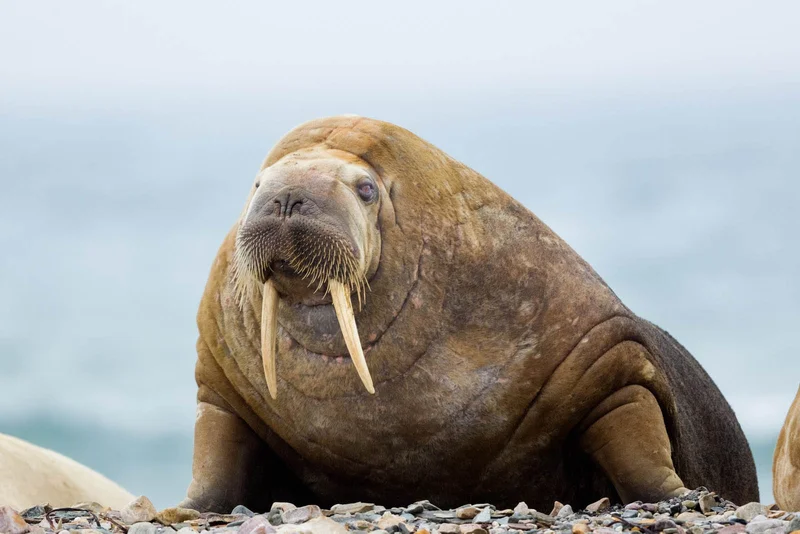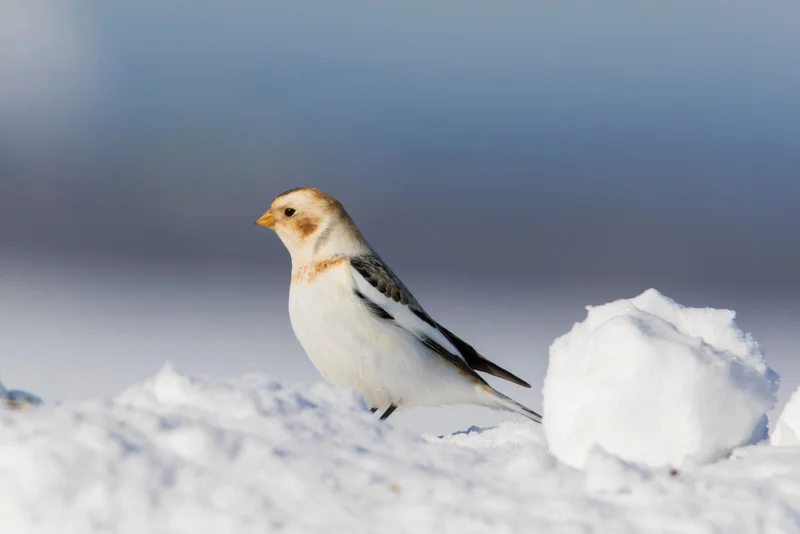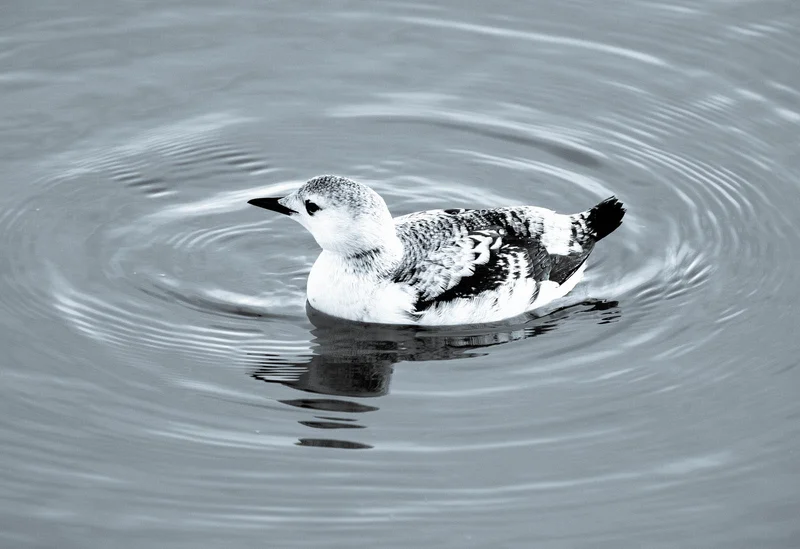Essential King Eider Information
Appearance
- Size: King Eiders can reach up to 70 cm (28 inches) in length with a wingspan of 1 meter (40 inches). Males weigh up to 1.6 kg (3.5 lbs).
- Male Plumage: The male is easily identifiable by its stunning plumage. It has a mostly black body, a buff-colored breast, and a pale blue-gray head with a green flash under the eye. The pinkish-red bill features a distinctive yellow knob at its base, resembling a crown, giving the species its royal name.
- Female Plumage: The female is less conspicuous, with brown feathers, black wing markings, and fine black lines on the head and neck.
Habitat and Migration
King Eiders inhabit the Arctic, breeding in coastal areas of Alaska, Russia, Greenland, and Svalbard. In winter, they migrate slightly south, gathering in flocks of up to 100,000 in areas like the Bering Sea and off the coast of Northern Norway.
Nesting and Behavior
In summer, females build shallow nests near water, lining them with moss, grass, and down. They often form creches, where multiple females care for their young together. Males do not participate in chick-rearing. At sea, King Eiders prefer shallow waters where they feed on mollusks, crabs, sea urchins, and starfish. During the breeding season, they feed closer to the surface, primarily on smaller invertebrates.
Predators and Threats
Adult King Eiders have few predators, but their chicks are vulnerable to glaucous gulls, Arctic foxes, and parasitic jaegers.
Interesting Facts
- Regal Appearance: The male's bright coloring and "crown-like" yellow knob make it one of the most striking Arctic birds.
- Social Nesting: Females often rear their young in groups called creches, providing collective protection for the chicks.
- Curiosity: King Eiders are more wary than other eiders, often requiring a slower approach to observe them in the wild.
